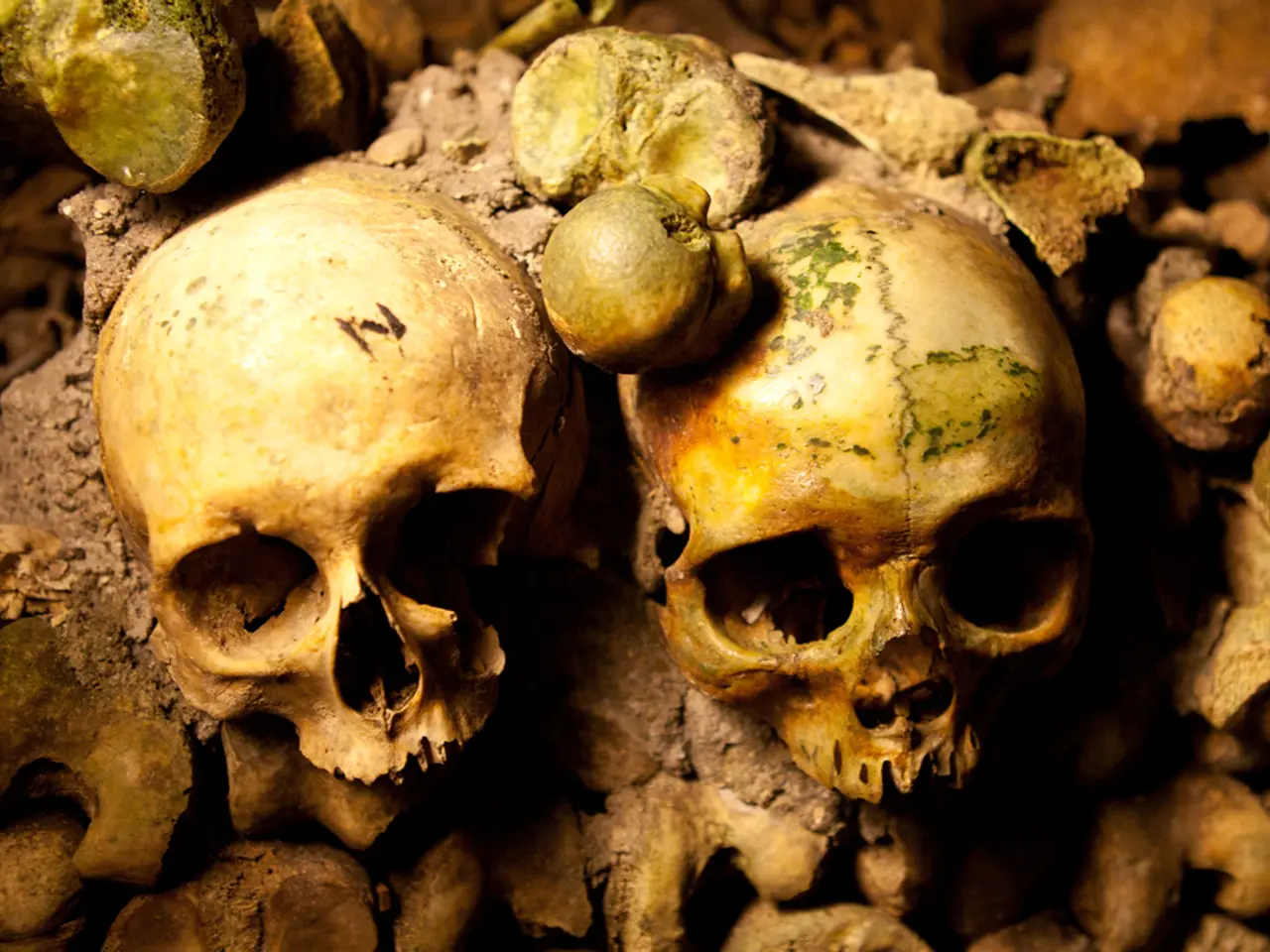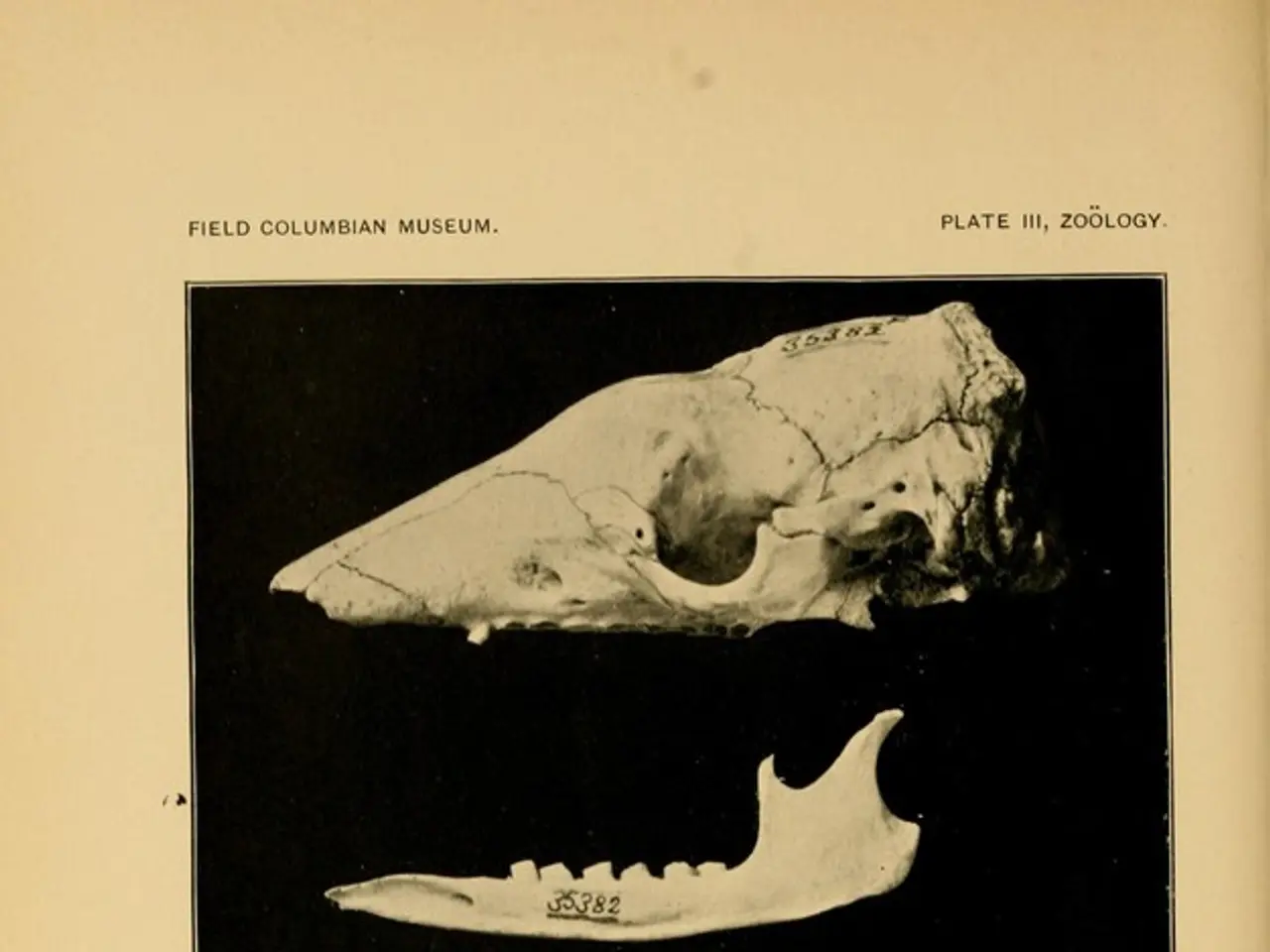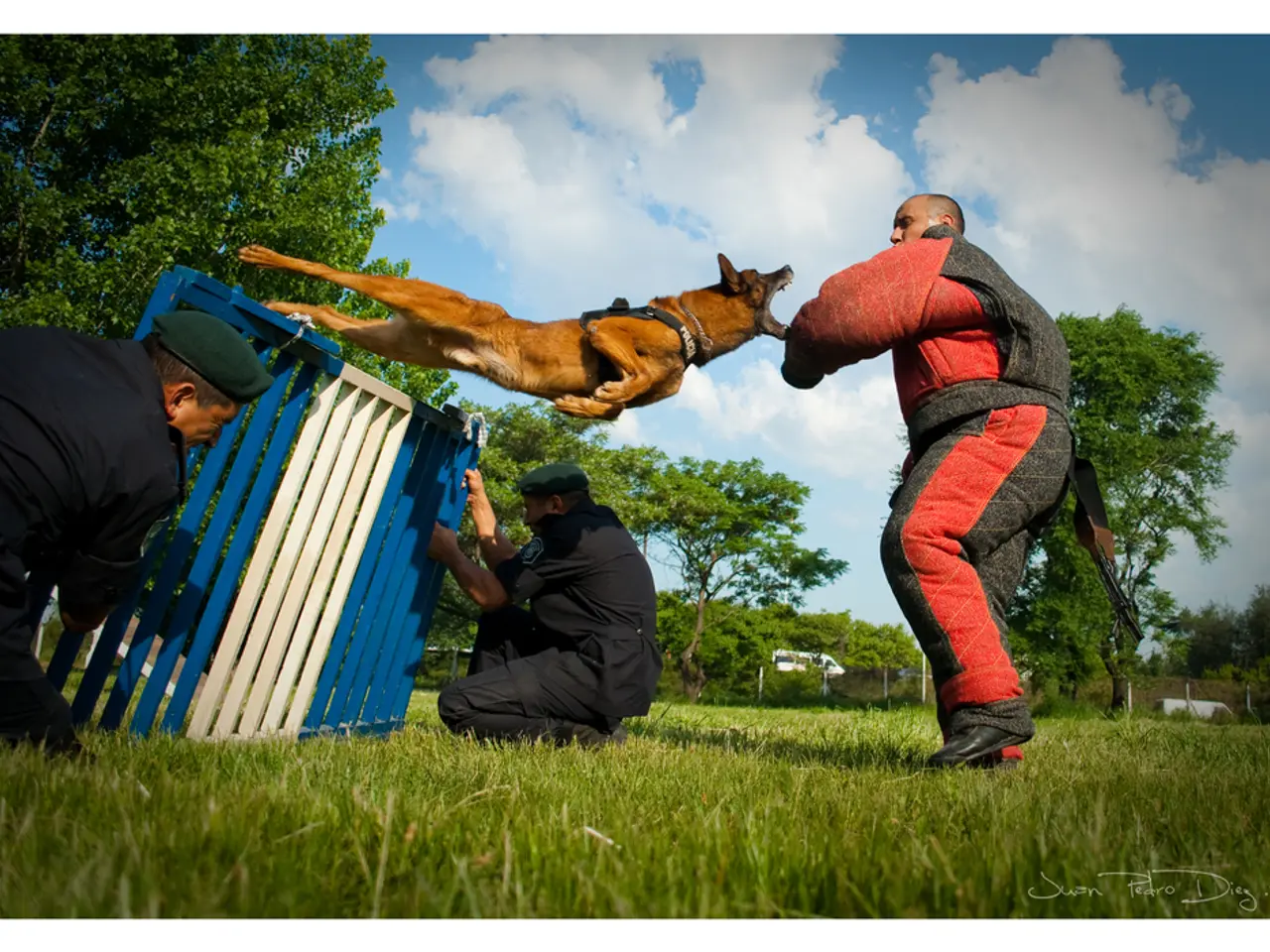Analysis of animal remains through mass spectrometry in archaeology
The groundbreaking Zooarchaeology by Mass Spectrometry (ZooMS) technique, developed by Michael Buckley at Manchester University, is shedding new light on the population histories of Neanderthals and Denisovans at the Denisova Cave in Siberia.
The cave, which has yielded numerous bone fragments, has been a hotspot for archaeological research. In an extraordinary discovery, a small bone fragment, measuring just 2.5 centimeters, was identified as human using the ZooMS technique. Further analysis confirmed that the bone belonged to a Neanderthal, marking a significant find in the study of ancient human populations.
The research, led by a team including Professor Tom Higham, Samantha Brown, and others, was published in the paper "Identification of a new hominin bone from Denisova Cave, Siberia using collagen fingerprinting and mitochondrial DNA analysis." The team applied the ZooMS technique to over 8,000 bone fragments found at the site, enabling them to isolate hominin remains from a predominantly non-hominin assemblage.
The integration of ZooMS results with DNA analysis and dating methods, such as optical dating of sediments, has constructed a comprehensive timeline of occupation and genetic turnovers in the cave over the past 300,000 years.
The ZooMS technique has proven instrumental in several ways:
1. **Expanding the sample size of identified hominin bones:** The technique has enabled the retrieval of genetic material from tiny fragments that would otherwise be impossible to classify visually, expanding the study samples for mtDNA and protein research.
2. **Recovery of molecular data from tiny fragments:** The technique allows for the recovery of molecular data from minute fragments, enhancing the understanding of ancient DNA and protein sequences.
3. **Evidence for the presence and temporal overlap of Neanderthals, Denisovans, and modern humans:** The integration of ZooMS results with DNA analysis provides evidence for the coexistence and interaction of different hominin species within the Denisova Cave.
4. **Supporting broader paleoanthropological interpretations:** The data gathered through ZooMS supports broader interpretations of population dynamics, habitat changes, and inter-species interactions within Denisova Cave's stratified deposits.
The small Neanderthal bone fragment, estimated to be around 80,000 years old, could potentially provide another Neanderthal genome, offering valuable insights into the relationships between ancient populations.
For more information, readers are encouraged to read the paper "Identification of a new hominin bone from Denisova Cave, Siberia using collagen fingerprinting and mitochondrial DNA analysis."
[Image credits: Samantha Brown (lab image) and Professor Tom Higham (bone fragment image)]
The study, led by Professor Tom Higham and others, utilizes the ZooMS technique to examine medical-conditions and health-and-wellness of Neanderthals and Denisovans at the Denisova Cave by analyzing over 8,000 bone fragments. Furthermore, this research in space-and-astronomy aims to uncover genetic turnovers and population histories of these ancient species spanning 300,000 years.




